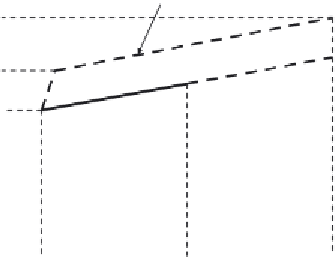Civil Engineering Reference
In-Depth Information
s
Idealized
kf
yk
kf
yk
kf
yk
/
g
s
f
yk
f
yd
=
f
yk
/
g
s
Design
f
yd
/
E
s
Figure 2.11 Idealized and design stress-strain diagrams for reinforcing steel (for tension
e
ud
e
uk
e
2.5 NONLINEAR MATERIAL PROPERTIES OF PRESTRESSING
TENDONS
2.5.1 General
Prestressed concretes are commonly used in steel-concrete composite brid-
ges. In this case, high-strength prestressing tendons are used to apply the ini-
tial stresses in concrete. To incorporate prestressed concrete decks in
designing and finite element modeling of steel-concrete composite bridges,
it is necessary to understand the nonlinear material behavior of the prestres-
sing tendons imbedded in the floor decks. Once again, when highlighting
the nonlinear material behavior of the reinforcement bars, it is decided to
use specified values recommended in current codes of practice to provide
a consistent modeling approach. However, in the presence of detailed
experimental investigations regarding the nonlinear material behavior of
prestressing tendons, the experimental data can be also incorporated into
specifies rules that apply to wires, bars, and strands used as prestressing ten-
dons in concrete structures. Prestressing tendons shall have an acceptably
low level of susceptibility to stress corrosion. The level of susceptibility to
stress corrosion may be assumed to be acceptably low if the prestressing ten-
dons comply with the criteria specified in EN 10138 [
2.30
]. The require-
ments for the properties of the prestressing tendons are for the materials
as placed in their final position in the structure, where the methods of pro-
duction, testing, and attestation of conformity for prestressing tendons are in







Search WWH ::

Custom Search